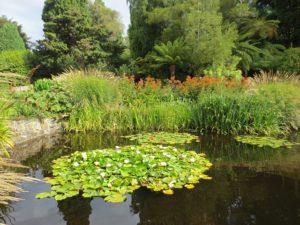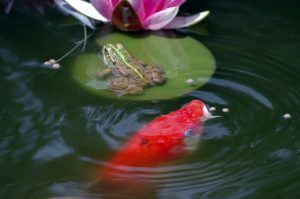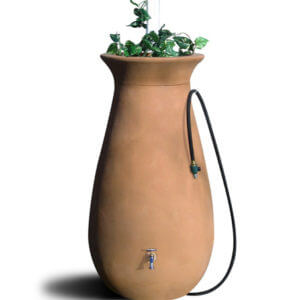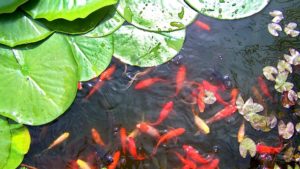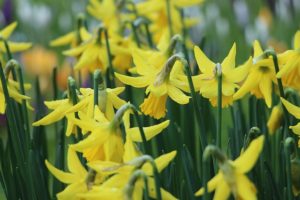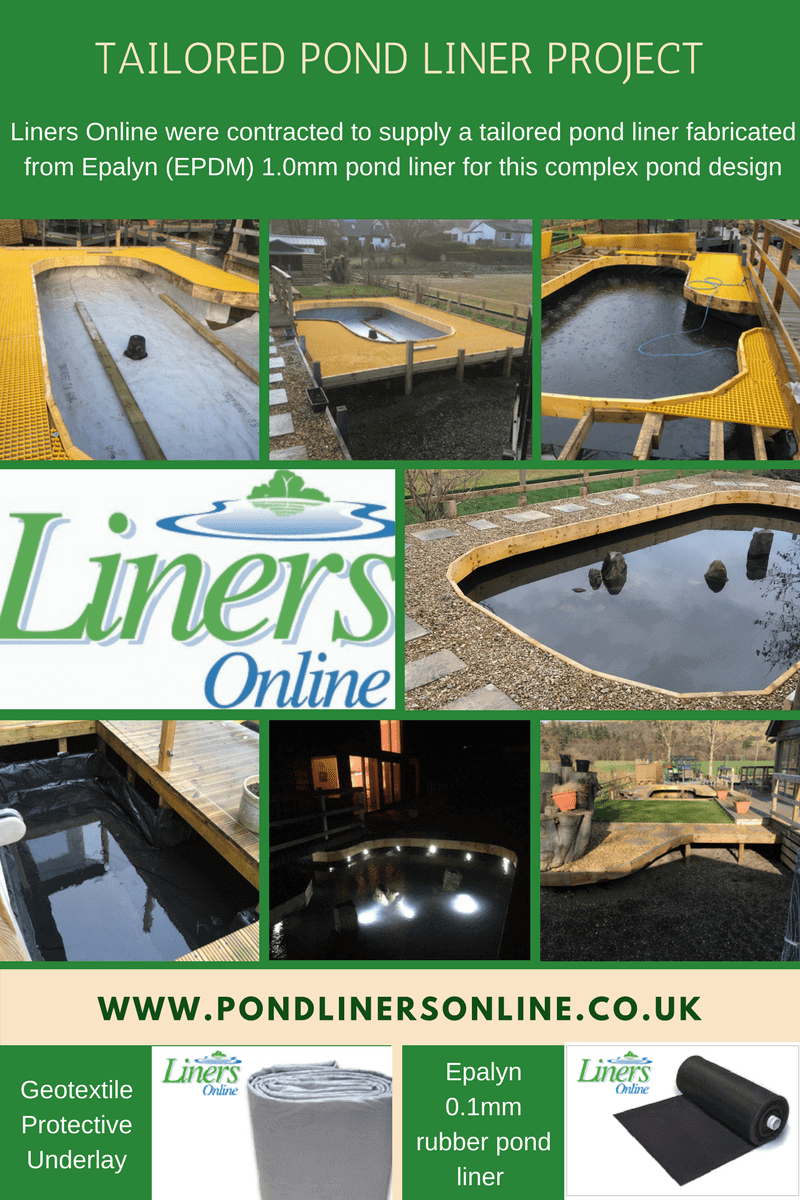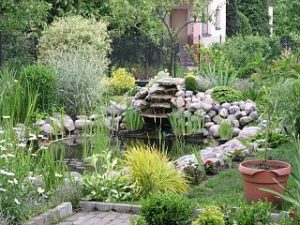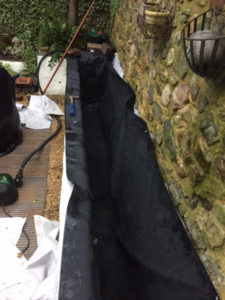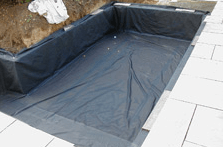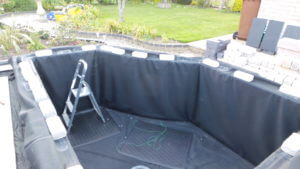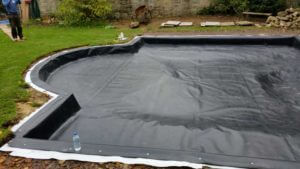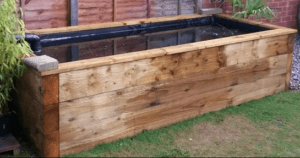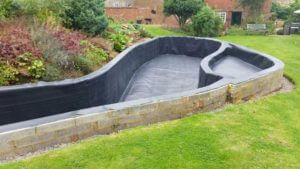Not all Koi carp are taken by visiting Heron! The hand of a deceitful person is just as likely to be the culprit for a garden ponds dwindling numbers. What are the real risks of loosing your precious Koi to theft? Despite researching this there doesn’t seem to be any data as it is collectively documented under garden thefts which, according to crime statistics one in seven homeowners in the UK has something stolen from their garden at any one time – with hanging baskets and garden tools toping the list! But, taking precautions is the wisest step to ensuring your Koi carp grow old in your pond without any risk to their lives.
The design of Koi ponds varies (size of pond, number of Koi and health of pond) and the value of Koi carp differs so it is very difficult to put a fixed strategy in place to deter ‘would-be-thieves’. However, there are steps you can consider to theft proof your Koi pond as best as possible.
Eight types of deterrents to stop Koi carp theft
- site pond close to your house and out of view of passers-by
- invest in secure fencing or hedging around your property – hawthorn, blackthorn, pyracantha and privet
- lock gates onto your property
- install movement and body heat activated halogen outdoor lighting
- strategically place CCTV cameras around your property
- be cautious about where you share information about your Koi carp – it is important to consider whether your online presence is potentially putting your fish and pond equipment at risk. We live in a digital era and for many criminals social media channels are used as a means of sourcing potential targets
- put a metal grate over your pond and bolt it securely in place when you go a way. This is easier to install to raised formal pond designs
- microchip your Koi carp and put a sign at your pond stating that your fish are trackable. Take photos of your fish – each Koi has their own distinct markings
Distracting the attention of feathered thieves from your pond
If herons are a likely thief to your garden pond then here are a few ideas (gathered from the feedback given by a number of fish pond enthusiats) to make your pond less attractive to these cheeky thieves:
- have places in your pond for fish to hide when they feel threatened – aquatic plants such as water lilies or adding in ledges.
- build a vertically sided pond to make it difficult for Heron or other prey to wade into your pond and wait for the kill.
- place a pond guard or netting over your pond – although many pond owners feel that this spoils the beauty of a pond and makes pond maintenance a challenge.
- avoid set routines for pond visits or activities out in your garden – Heron are wise creatures and will strike when they know you are not around. Their feeding times are usually dawn or dusk. They are particularly active at the start of the breeding season and the young become active June to July.
- place a decoy or realistic-looking plastic heron close to your pond – some pond owners swear by this tactic while others are somewhat sceptical. But, from my experience this is a good deterrent. Beware, though as it may get attacked – with beak open and wings outstretched it will try to scare off the decoy! After an unsuccessful attempt at driving him off, the unwelcome visitor is likely to fly-off with ego dented!
- build a pergola to disguise your pond. Herons will only visit if they can see the water of a pond. A pergola type structure will also have the added benefit of shading your pond for some of the day, helping prevent algae growth.
- fishing line suspended 8 feet above the water in the path in which Heron fly in to land on the edge of the pond. The light gauge line will scare them off.
- attach a length of fishing line across the path of the heron about a foot away from the pond and a foot off the ground. Heron prefers to wade into the pond – so the fishing line will give it a shock when it trips over the line.
- put two lengths of fishing line about 6 to 12 inches from the pond and 6 to 12 inches above the ground. However, herons do get wise to this and will start to use other routes. Therefore, it is probably wise for the whole pond to have a perimeter of fishing-line placed around it.
- hang wind-chimes near your pond.
- an effective long term solution for preventing herons taking Koi is to train the fish when to come to the waters surface – always feed them at the same time every day, so that they eventually get to know when to come up.
Which ever strategy you decide to put in place to protect your pond life, remember that the heron is protected at all times under the Wildlife and Countryside Act 1981, with fines or prison sentences handed to anyone killing or attempting to kill the majestic bird of our waterways.
Buying Koi carp for your garden pond
Koi, or as sometimes referred to as ‘Swimming Jewels’ can live for many years making them popular as pets. Koi kept in garden ponds can live for 25 to 35 years whereas those kept in a bigger expanse of water can live for 100+ years and can grow to 36 inches or more under ideal conditions. Koi are bred for their colour and beauty with no two having the same markings, scale types and patterns. There are currently 22 recognised varieties of Koi classified according to their variation in colour. The different breeds each affect the price tag, which ranges from just a few pounds to thousands of pounds.
Three well known Koi carp breeds
- Kohaku – means ‘red and white’. Known for their elegance. It was the first ornamental Koi variety to be developed and is one of the more popular choices amongst Koi hobbyists.
- Chagoi – well known for their friendly personality and tameable nature. They can easily be trained to hand feed. Chagoi Koi are easily recognised by their distinct network of scales and uniform colouring. Easily grow to large sizes and are of deep earthen colours.
- Ogon – uniform bright metallic coloured fish.
Koi fish keeping requires dedication and thorough knowledge on pond maintenance plus upkeep. But, it is all worthwhile as there is considerable reward in owning such strikingly good looking fish. Despite their actual value of a few pounds or lots more, I am sure you will agree that it is wise to take the necessary steps to keep them out of harms way!
Need help designing and building the perfect Koi pond? Then I hope my previous article provides the information you need >> 5 Steps to building a Koi pond







